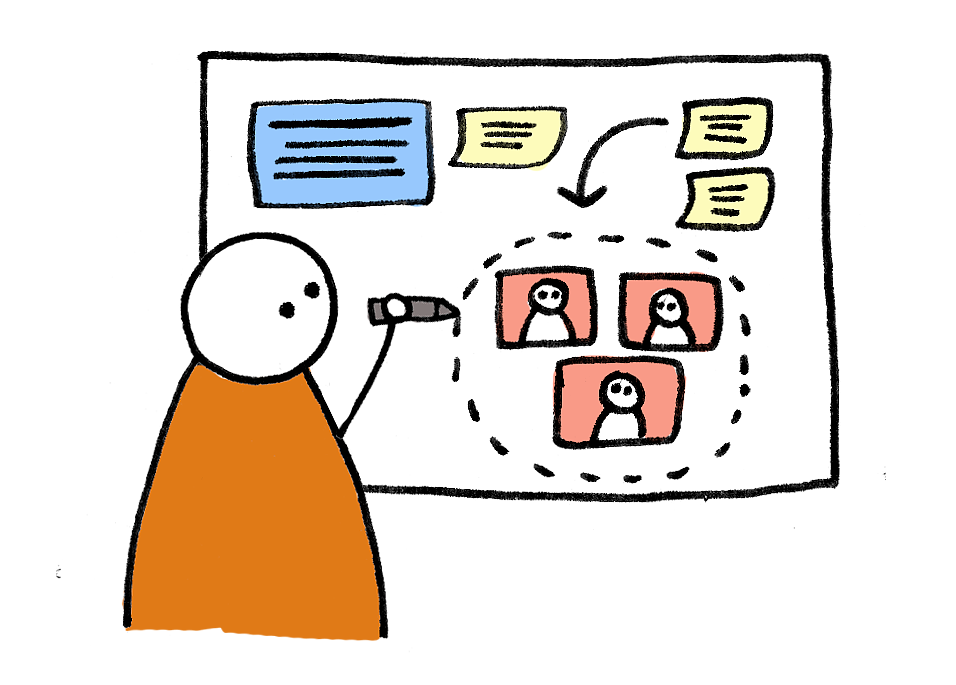It is impossible to exaggerate the importance of visual design in user experience. It has a big impact on a user’s experience to make and make it either enjoyable or a frustrating one.
There are many ways that visual design can improve user experience, including by enhancing navigation, effectively communicating information, and creating emotional bonds with users. In this blog post, we’ll go over the different ways that visual design can improve user experience (UX) and talk about the best practices for incorporating it.
Improving Navigation with Visual Design
Navigation is one of the most important UX components. Users must be able to navigate the website or app without getting lost and find what they’re looking for with ease. In this aspect of UX, visual design is crucial. Users can be directed to the most important information on a page, with the use of visual hierarchy. Size, color, contrast, and spacing can all be used to accomplish this. Visual elements like icons and graphics can also be used to create a clear and simple navigation menu, making it more user-friendly and intuitive.
Users can better understand where they are on the website or app by using visual design to create a sense of place. Consistent branding, color schemes, and typography can help with this. Users can navigate and find what they need more easily thanks to the creation of a clear and consistent visual language that helps them quickly understand their location and the object they are looking at.
Conveying Information Effectively with Visual Design
Effective information communication is another crucial component of UX. Information can be communicated visually in a way that is understandable, brief, and clear. Infographics and data visualizations, for instance, can be used to explain complex information in a way that is easier to understand. Information can be quickly and effectively communicated using icons and symbols.
Readability, which is essential for enhancing user experience, can also be improved through visual design. Content can be made more readable and scan-friendly by using typography, font sizes, and spacing. Users can consume content more quickly and easily by incorporating visual design principles into the layout and presentation of information, which can improve user satisfaction.
Creating Emotional Connection with Users
Additionally, emotional connections with users can be made through visual design. Designers can evoke emotions and establish deeper connections with users by using elements like color, imagery, and typography. For instance, a website with warm colors and amiable imagery may seem cozy and familiar, while one with bold colors, eye-catching typography, or both can convey excitement and vitality.
Branding can also be strengthened through visual design to produce a seamless user experience. Users can quickly identify and associate with a brand by using consistent color schemes, typography, and imagery, which can increase trust and loyalty over time.
Best Practices for Incorporating Visual Design into UX

Here are a few best practices that designers should adhere to in order to fully utilize the power of visual design in user experience:
Understanding the user’s needs and preferences is crucial before designing any visual elements. User testing, user personas, and user research can all help with this.
Keep it Simple: Simple, understandable visual design should be used. Users may become overwhelmed and have their user experience diminished by having too many visual elements.
Use Consistent Branding: The brand’s identity and messaging should be reflected in the visual design. This promotes user recognition and trust.
Prioritize Functionality: Although visual design is crucial, functionality should never be sacrificed for it. Functionality and usability should always come before aesthetics in the design process.
UX with Visual Design Focus
When it comes to UX and visual design, always remember the following:
1. Understanding the user is crucial before designing any visual elements because it will help you better recognize their needs and preferences. In order to design a product that appeals to users and fulfills their needs, it is essential to understand the user.
2. Simple and understandable visual design should be used. Users may become overwhelmed and have their user experience diminished by having too many visual elements. A clean, simple design can improve usability and engagement while a cluttered one can cause confusion and frustration.
3. The brand’s identity and messaging should be reflected in the visual design. This promotes user recognition and trust. A cohesive brand identity that users can easily identify and trust is created by using a consistent visual language across all touchpoints, including the website, app, social media, and marketing materials.
4. Although visual design is crucial, functionality should never be sacrificed for it. Functionality and usability should always come before aesthetics in the design process. A design may look fantastic, but it won’t work if it’s not useful. A design that is both aesthetically pleasing and useful is more likely to be used by users.
5. To make sure visual design is effective, it should be tested and iterated. Users, A/ B testing, and usability testing can all be used to accomplish this. Designers can use testing to determine what works and what doesn’t and adjust as necessary. Designers can continuously enhance and optimize their designs thanks to iteration, a crucial step in the design process.
Takeaway
As crucial part of UX, visual design can significantly improve the user experience. Designers can produce designs that are both interesting and successful by using it to enhance navigation, effectively communicate information, and foster emotional connections with users.
When incorporating visual design into UX, it’s important to adhere to best practices like user comprehension, simplicity, consistent branding, prioritizing functionality, testing, and iteration. Designers can produce designs that are both visually appealing and functional, as well as that satisfy user needs and preferences, by adhering to these best practices.
The post The Power of Visual Design: Using Graphics to Enhance UX appeared first on Creativ Digital.
from Creativ Digital https://ift.tt/Getflid
No comments:
Post a Comment